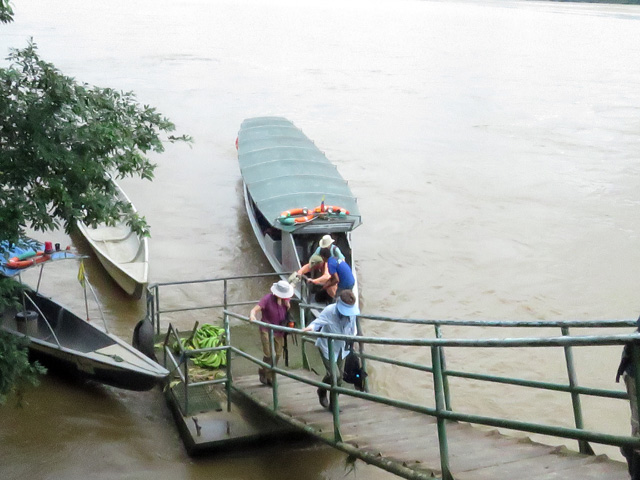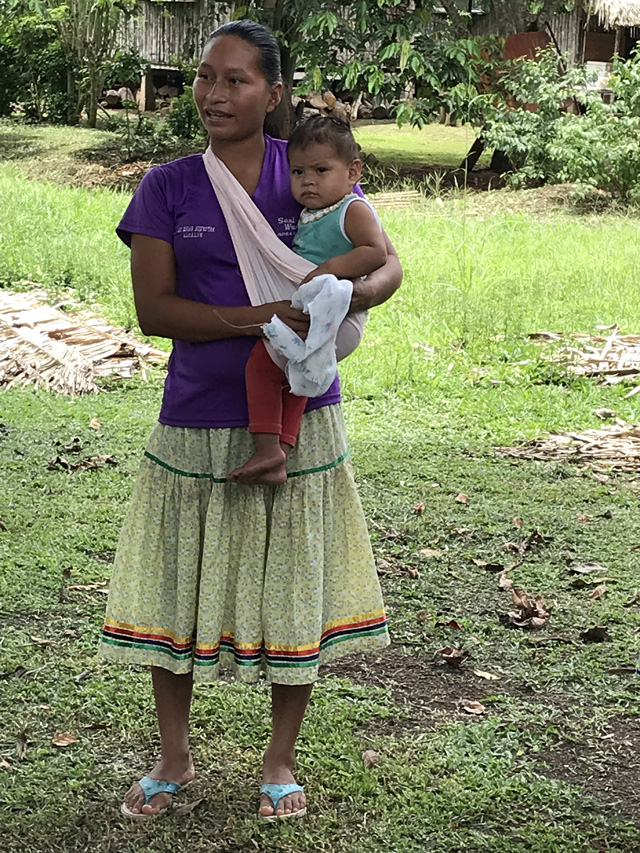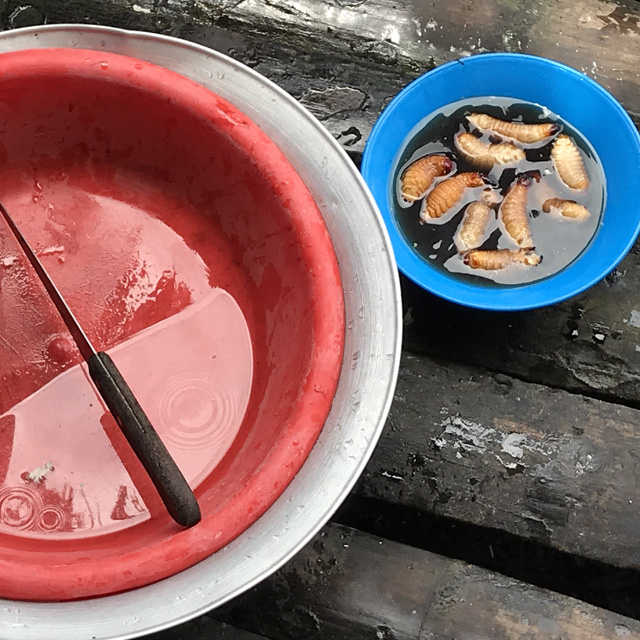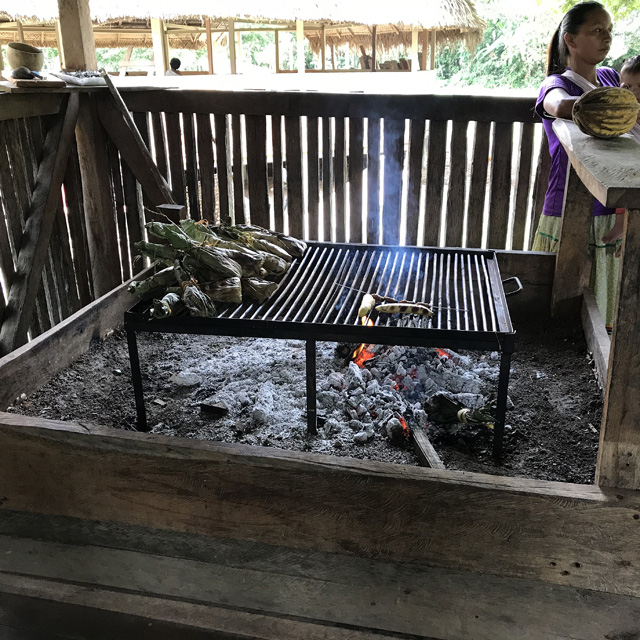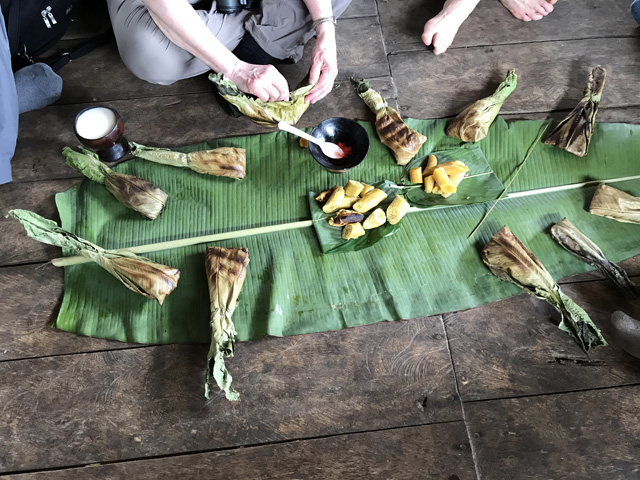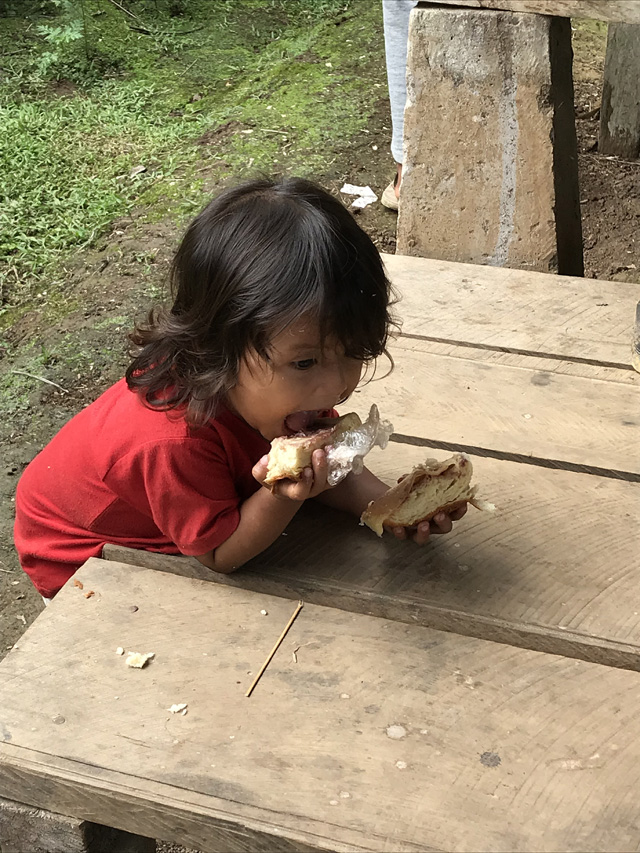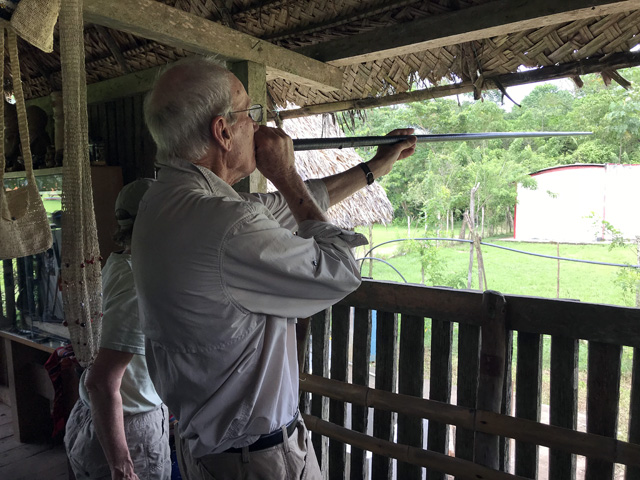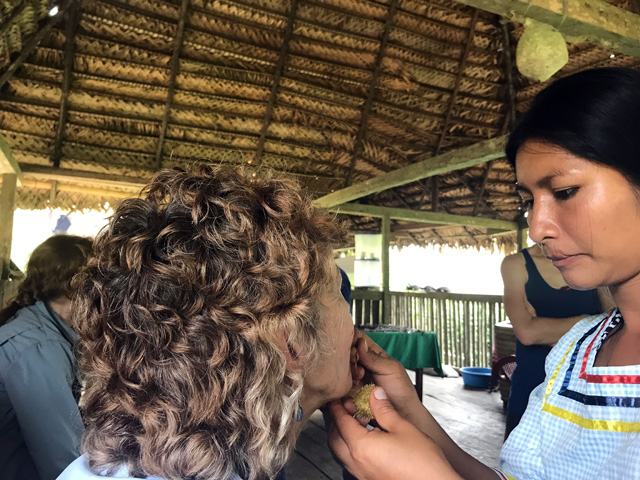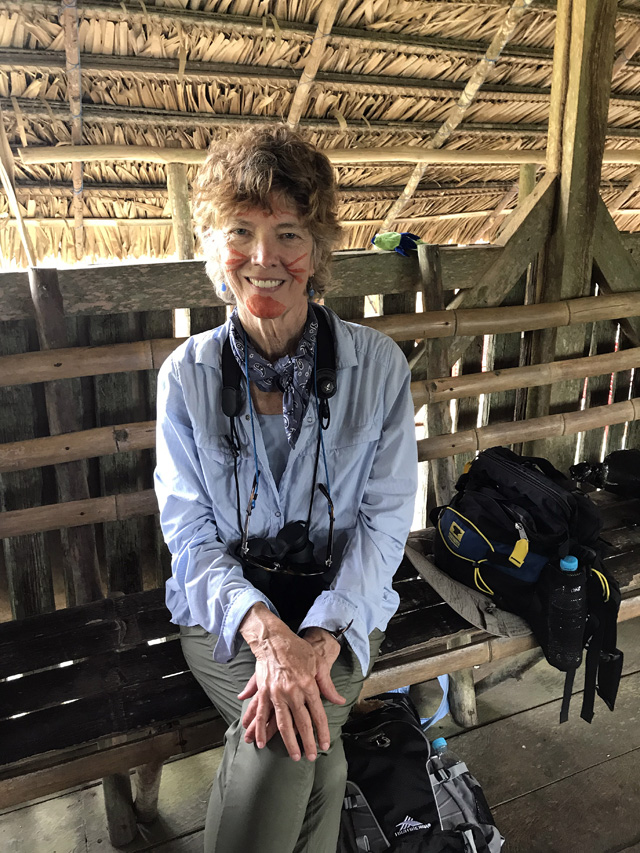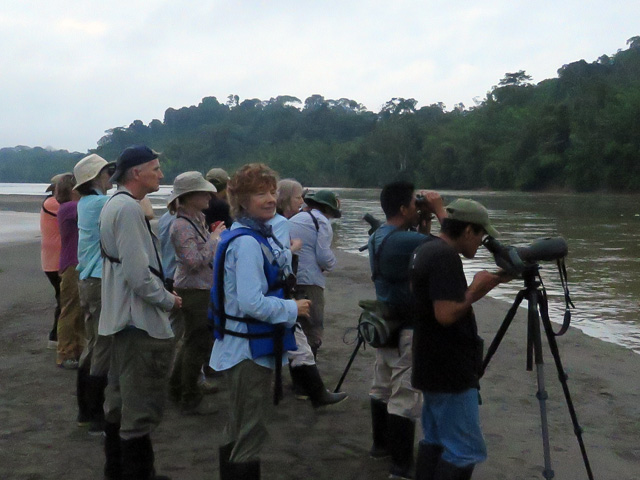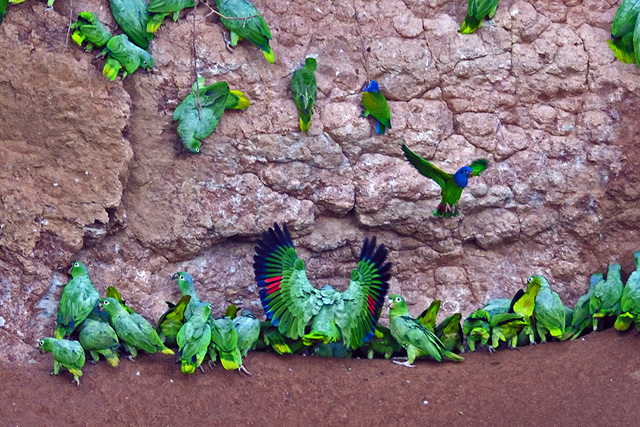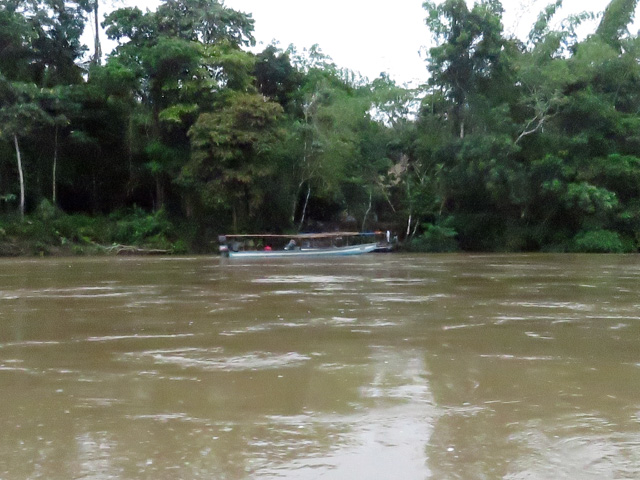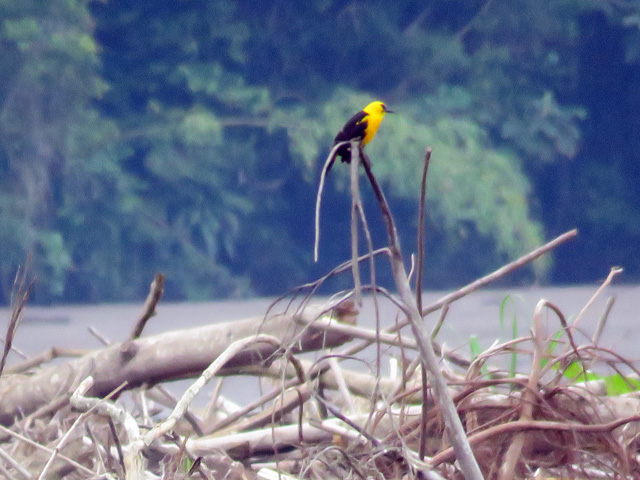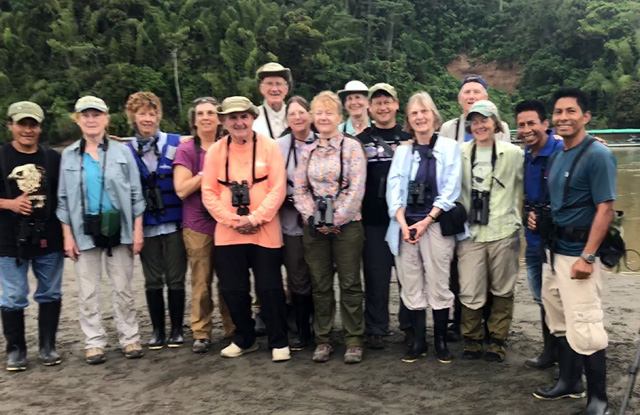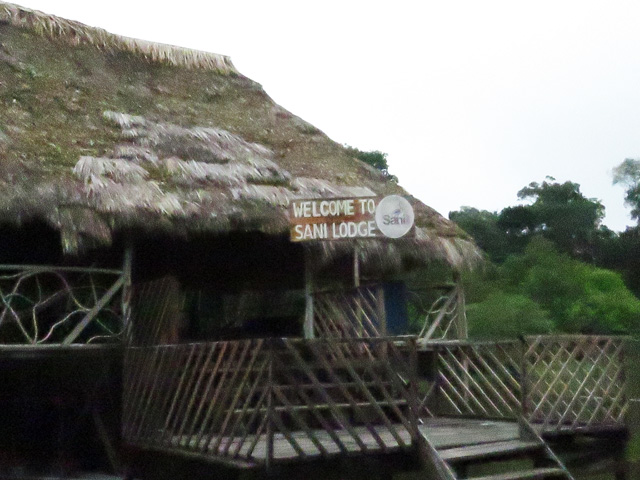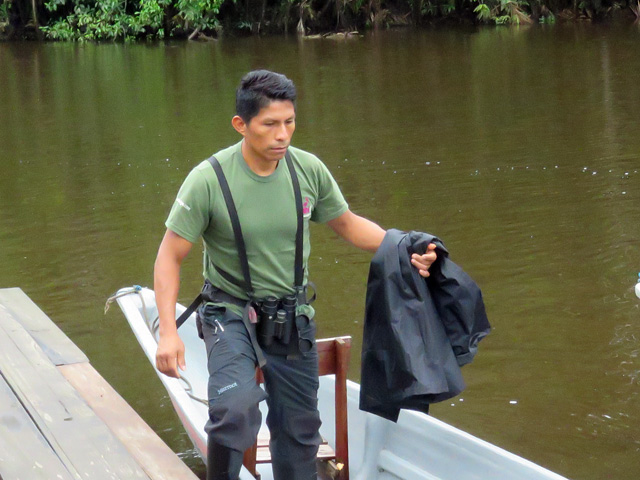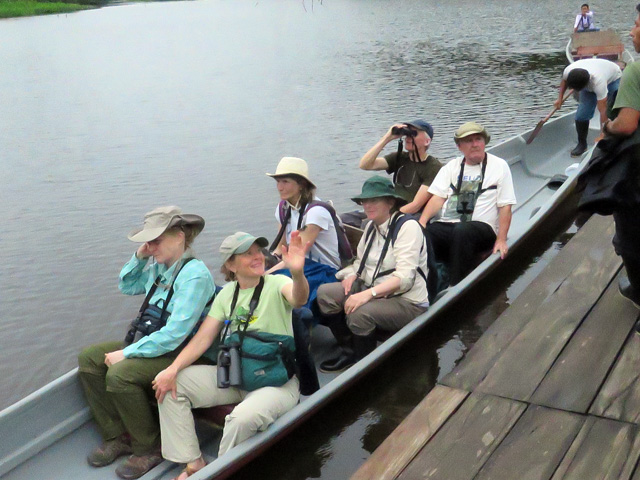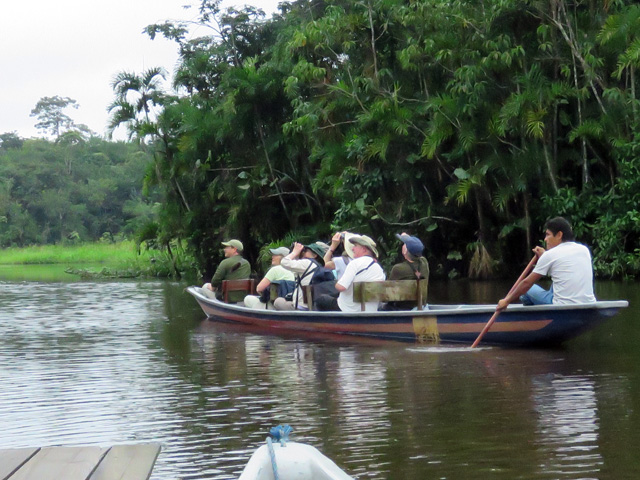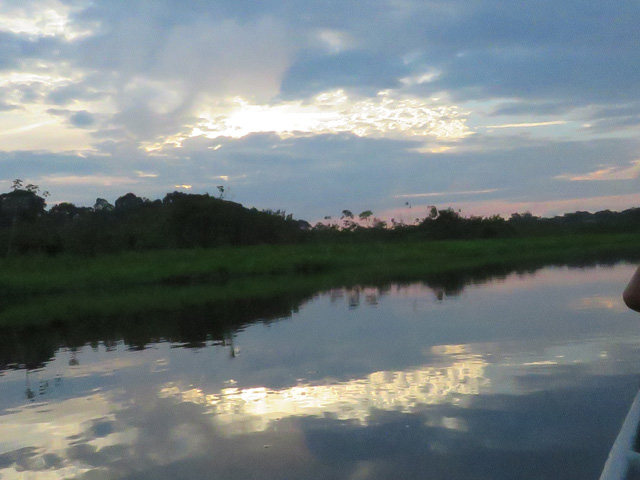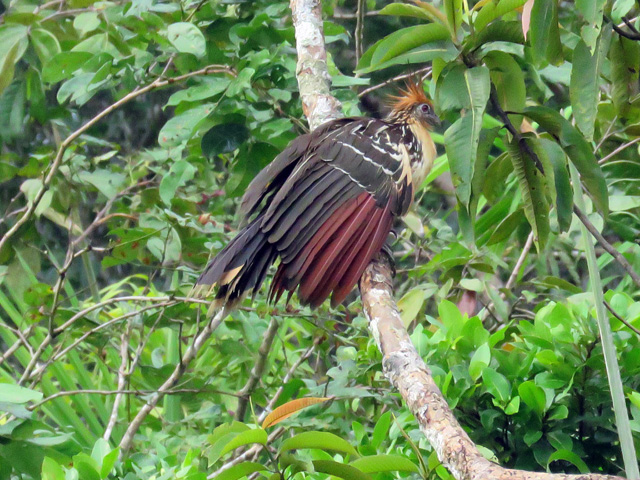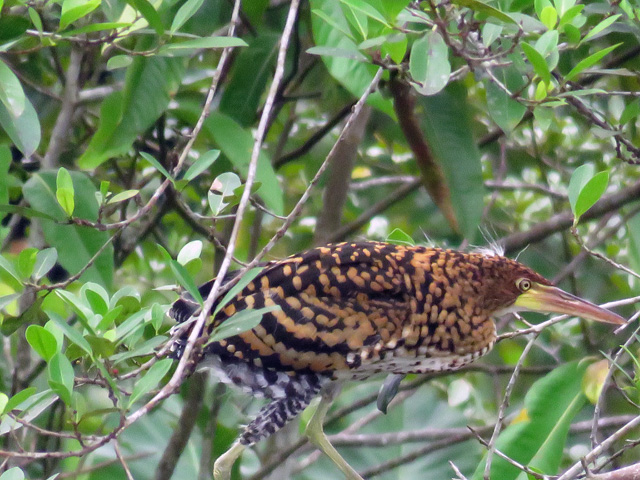Sani Isla is a community of about 600 Kichwa indigenous people nestled along the Napo river deep in the Ecuadorian Amazon. The Sani Lodge is their main source of income but in looking to diversify, the women in the community expressed their desire to revitalize traditional handicrafts. The handicrafts could provide a new income stream from sustainably sourced forest materials and help promote the traditional artisan practices of the Kichwa, strengthening their self identity and celebrating their way of life while protecting their forest home. We visited them for lunch, and to experience some of their culinary and celebration practices. It was great to do a little to support their efforts.
We were welcomed by some of the women of the community and fed some traditional food.
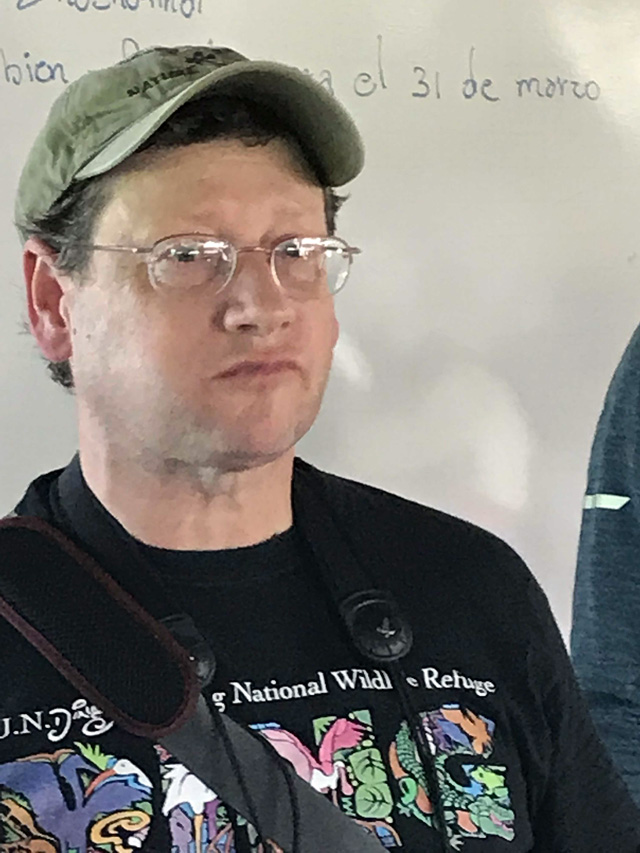
Chip, our leader was one of the brave who after biting the grub’s head off, proclaimed the treat tasty. Most of us were unconvinced.
After lunch, our guide gave a brief talk about hunting with a blowgun and asked for a volunteer to fire one. I stepped up and after instructions, completely “blew it” with the dart only going about 50 feet. Provided some post-lunch humor at least.
Then we had some face painting such as was done for celebrations and festivals.
It was a nice outing. We bought chocolate and hand-made baskets and other items. Fifteen school kids joined us on the ride back to Sani Lodge, saving the school boat a run. Little did we know that the next day’s trip on the Rio Napo back to Coca would be much more hair-raising.

